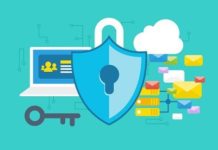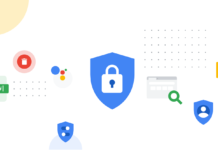When millions of phishing emails are sent every day, it comes as no surprise that a good number of people fall prey to phishing attacks. Cybercrimes have more than doubled over the last two years and enterprises are losing billions of dollars to phishing attacks.
This occurrence, during the time when technology is advanced enough to keep the systems secure, is alarming. It shows the harsh reality that we have not been able to use technology to protect our systems and employees from phishing attacks. At the same time, the attackers seem to be taking full advantage of the latest developments in technology by finding new and innovative ways to dupe users.
Zero-Day Attack is yet another example of how scammers are gaining an advantage over the enterprise and bypassing the existing antivirus software and spam filters. In simple terms, a zero-day attack is successful because of the fact that many antivirus software solutions rely on an existing database of signatures to detect and stop phishing attacks.
So when there is a new URL with no signature, the antivirus software is helpless in identifying if the email is fake or genuine. And it takes around 24-48 hours for the software to develop the signature of the URL and determine it as fake.
Now, how many users would have already opened the email during this period? Imagine how many users would have become victims even before the software could decide if the email was fake! Do you know that the first victim of a phishing email falls for it in less than 82 seconds? With stakes so high, enterprises will need to step up and upgrade their email security system to prevent phishing attacks.
Enterprises need to understand that only the latest anti-phishing software that uses artificial intelligence can successfully detect and block all phishing emails. That is because the Phishing Attack Software does not work as traditional software does. The software does not wait to create the signature of a URL and then block it.
The machine learning algorithm is used to develop behavior profiles and social graphs that help in identifying fake and suspicious emails. When an email is sent from an outsider claiming to be from an employee, a vendor, or a senior official, the software detects a change in the behavior pattern and alerts the users. A banner appears with the email, warning the user that it could be a fraudulent email from an impersonator.
There are four ways in which a user can fall prey to zero-day attacks. Let us see what they are.
- Microsoft Office Macros
- Macros are used to automate recurring tasks in Microsoft Office. By enabling macros a change made in one place will reflect throughout the file.
- Phishers send malware using the Microsoft Office files. Once you use the macros, the malware will be installed on the computer and will spread through the entire system of the enterprise.
- By posing as a colleague or a senior employee, phishers urge employees to download the file and run the macros.
- Infected PDFs
- Phishers take advantage of the PDF files’ vulnerability to run malicious code on the system using the file as a vehicle.
- When employees download and open the file, the virus spreads through the system and takes control.
- Malicious Links
- It is easy to embed links in an email. The link will directly take the user to the specified page of the website. But, pushers use this feature to include links to fake websites and steal user information.
- One-click on the link can also download and install malware and ransomware onto the computer system and allow phishers to take control.
- Embedded Code
- HTML emails allow users to include scripts as a part of the email that can be executed when the user opens it.
- But this feature is being misused to send and install malware and other dangerous software to gain control over the systems of an enterprise.
The Phishing Attack Software can work with any email system. Enterprises that use Outlook, G Suite, Office 365, or any other email system can install the anti-phishing software to protect their systems and employees from phishing attacks.
The software also works with any antivirus software and spam filters. Built on the cloud, it runs in the cloud platform to provide an invisible layer of protection to the email system and alert the users about suspicious emails. The banners are user-friendly and easy to understand. A single click on the banner will block and report the email. Employees can report suspicious emails from any location as the anti-phishing software works on any device with no requirement to download any additional software.







